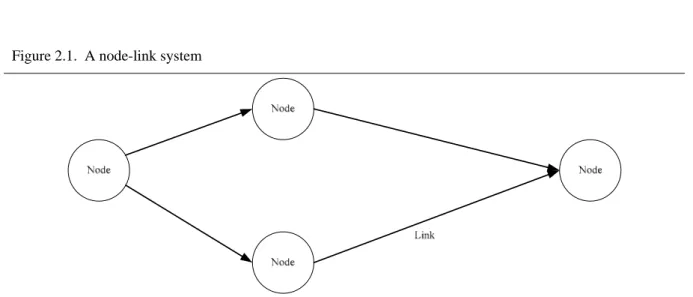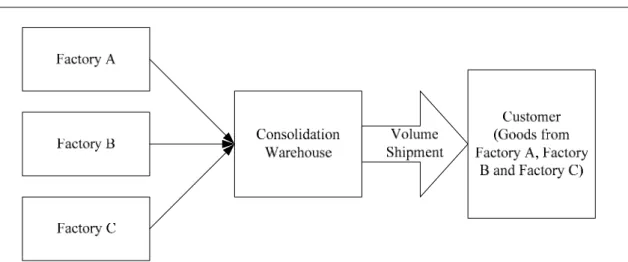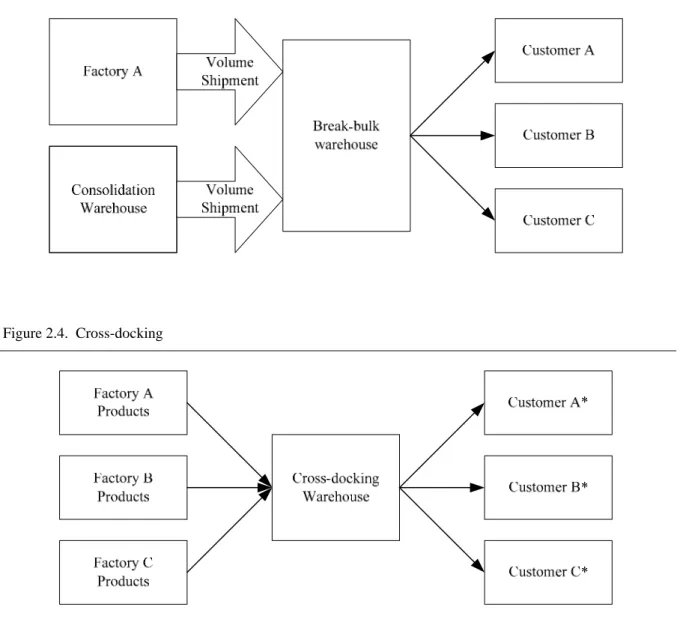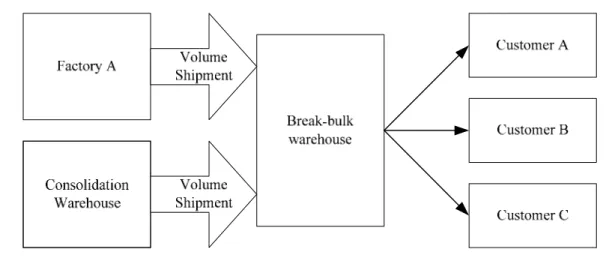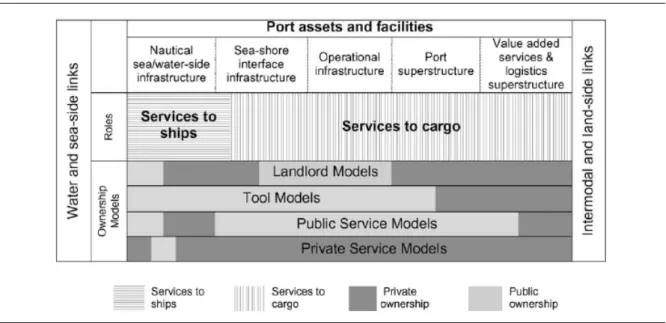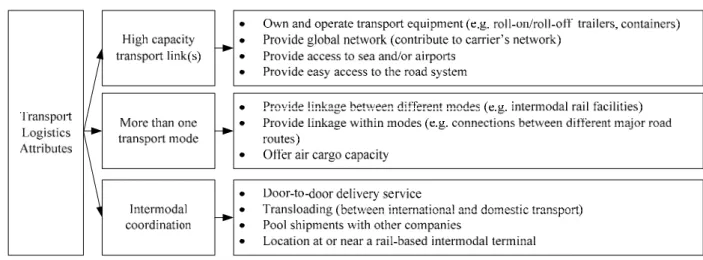Mention of company names and commercial products does not imply UN approval. The views expressed in this study are those of the authors and do not necessarily reflect the views of the United Nations.
Background of the study
The study provides a solid basis for the ESCAP Secretariat to engage in further research and analysis in this area to present countries with policy options for developing inland logistics centers and dry ports. It also provides governments and industry with an initial step-by-step process to evaluate the potential of future inland logistics centers and dry ports.
Report structure and contents
The result of this chapter is a six-stage process in the application of the inland logistics concept, which identifies local benefits; interested parties; potential functions;. The results are converted into three diagrams that are presented at the beginning of each chapter. inland locations” and chapter 8 “Applying the model (Part 3) – The concept of clusters”.
Introduction
Definition of supply chain and supply chain management
Successful supply chain implementation requires compatible business philosophies on the part of supply chain partners (Min and Mentzer, 2000); and. Supply chain management is the application of a supply chain orientation to both suppliers and customers (Mentzer et al., 2001).
Supply chain structure
In much of supply chain thinking, there is an underlying assumption of unity and cooperation among supply chain members. However, it is difficult to state categorically that a particular supply chain structure is the most suitable for a particular company (Ernst and Kamrad, 2000).
Supply chain members
Commitment to supply chain integration
Conventional supply chain thinking sees the structure of supply chains moving away from centralized and vertically integrated companies with a single manufacturing site to geographically distributed networks with the collective goal of creating customer value (Stock et al., 2000). A single supply chain structure can be complex and the nature of companies can change along the supply chain from "speculative and mass production upstream driven by forecasts" to "driven downstream adaptation of activities of production and service" (Van Hoek, 2001, p. 171).
Cooperation and coordination
Ability to exert power
Supply chain activities
Supply chain integration
Many companies have moved away from pure competition to one of supply chain partnerships (Chen and Paulraj, 2004). Successful supply chain integration should also improve employee productivity and customer service (Lummus and Vokurka, 1999).
Supply chain logistics
Trends in logistics developments
Most of the above developments or trends are directly related to inland logistics centers, and further discussion is limited to the specific application concepts in this report. Interestingly, while most of the logistics trends mentioned in the extract above are focused on hubs, terminals or warehouses, the report from the Technical University of Berlin is largely about transport.
Relations between logistics service providers and their customers
The logistics solution is tailored to the customer's needs and typically includes a number of value-adding services. According to Accenture, the 4PL market can be classified by the extent of the relationship between the 4PL and its customer.
Logistics centres
Functions of logistics centres
This section describes some key functions, all of which may be performed in seaports, although not necessarily related to maritime transport. Many of the above postponement activities are often carried out in the warehouses of logistics companies.

Location of logistics centres
Finishing the product after receiving the order results in a lower inventory of end products, greater flexibility and an inventory of general parts much later in the supply chain. However, an increase in the number of storage points increases the overall level of inventory in the supply chain.
Introduction
What is a port?
Influences on decisions of enterprises to locate at ports
Port organization and structure
The nature of land use in port areas will depend on the nature of the control over the port, which is often exercised by a port authority when transport-related port activities predominate. But even transportation-oriented owners of wholly private ports can sell port properties for “non-port activities.”
Different types of port operators
There is no ideal or standard model of port ownership and institutional structuring, and many different styles of organizational structure can be found in ports around the world. In the last few decades since the beginning of the modern era of privatization, there has been a debate about the appropriate scope of public or private status of port ownership and management, and mainly academic commentators have presented different models or frameworks.
Responsibility for financing port development
Financing of operational infrastructure
The basic infrastructure under the control of the port authority can be financed from abroad (because of the large amount involved) under the guarantee of the government and for a long period. Under certain conditions, ownership rights may be transferred to a third party, preferably with the approval of the port authority.
Public-private partnerships
In lessor ports with leased terminals, the operational infrastructure at the terminal can be financed by the terminal concessionaire or lessee on the basis of a long-term lease (20 to 30 years) with the legal character of a property right. In the United Kingdom, the New Approach to Assessment (NATA) provides criteria for all transport projects, including new port developments (Department for Environment, Transport and the Regions, 2000).
Services offered by modern ports
- Commercial freight transport-related services
- Non-transport logistics
- Other industrial services
- Industrial clusters in ports
- Other categories of port use
Shortsea and feeder shipping make overseas destinations - the United Kingdom, Ireland, Scandinavia, the Baltic and the Mediterranean - just as accessible. One of the main benefits of establishing a facility in the port is the ability to integrate the facility into existing industrial infrastructure and logistics service providers.
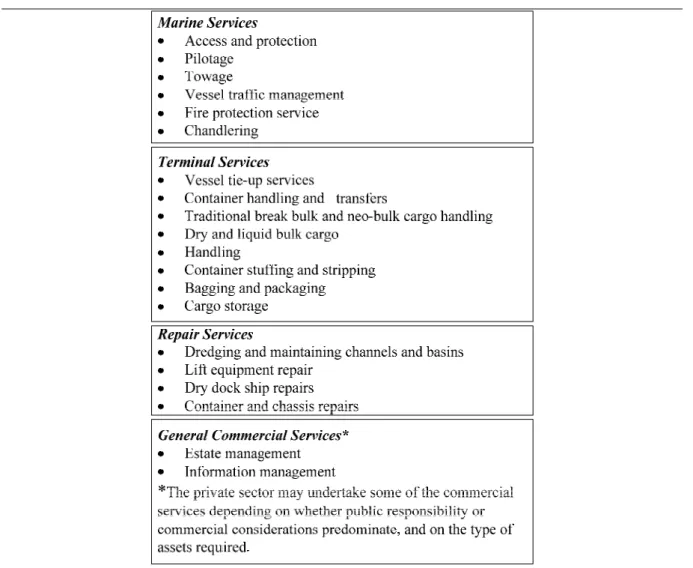
Responsibility for assets and associated services
ICTSI decided to withdraw from the Port of Rosario after investing US$27 million in a failed attempt to operate the container terminal. Second, the port land is transferred to a local authority, municipality or local government for redevelopment.
Intermediate conclusions: Towards a step-by-step action plan for “dry ports” – Part 142
Summary of Chapter 3 – Towards a step-by-step action plan for "dry port" development (Part 1).
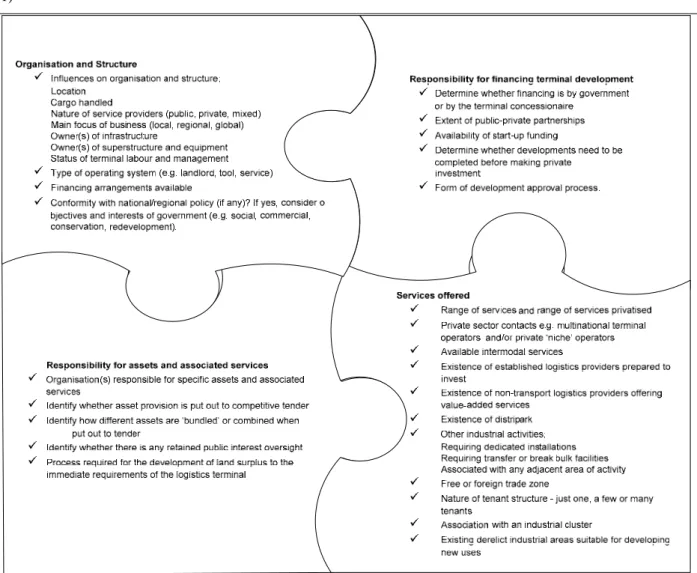
Introduction
The definition of inland ports
Walter and Poist (2004) emphasize the importance of an information-based approach to an inland port by stating. Indeed, the term 'dry port' is hardly ever used and usually refers to developments outside the United States.
Classification of inland or dry ports
Since then there has been a focus on trying to develop Rickenbacker as a distribution center, capitalizing on the strength of its location, being centrally located near more than half of the United States' manufacturing base. Combined with the airport's customs clearance facility, Rickenbacker is among the largest ports of entry for textiles in the United States.
The development of dry ports
The advantages of dry ports
A comprehensive analysis of the benefits of dry ports requires a balance check between transport externalities, which can be benefits and costs. Increasing flexibility and innovation, creating a new quality of service and transport and strengthening the economy for international competition;.
Constituents of a good dry port
An inland port is estimated to require a minimum basic population of three million people (Leitner and Harrison, 2001). An inland logistics port can have a positive impact on the regional or local economy, not only by directly handling international trade, but also by attracting distributors and manufacturers associated with it.
Critical issues for the effective development of dry ports
Therefore, it can be argued that they do not compensate for the external costs of transport. The external costs of transport are many and varied and can be considered in both global and local terms.
Legal implications of dry ports
Background
As with the argument about the external benefits of transport in general and dry ports in particular, the external costs must be evaluated. In addition, the responsibility of different levels of government within a country (local, regional, national) or at the supranational level (e.g. the European Union) may also vary.
The roles of Government
Enabling regulatory environment for foreign investment in major logistics centers and dry ports Hong Kong, China: Foreign investors can set up businesses without approval from the authorities. Incentives provided on logistics centers can be categorized as land incentive, tax incentive and others such as administrative support.
Administrative/financial arrangements
The example is not intended to examine the quality of the specific project, but to show the evaluation methodology. Couldn't ports be so much faster and more productive if they had more strategic buffers in the hinterland?
Institutional arrangements
Background
Local steel producers such as the ThyssenKrupp mills led the way by obtaining coal and ore by ship. The overall efficiency of these chains (including repositioning of the equipment) depends to a large extent on well-functioning inland hub and spoke systems centered on hubs such as Duisburg.
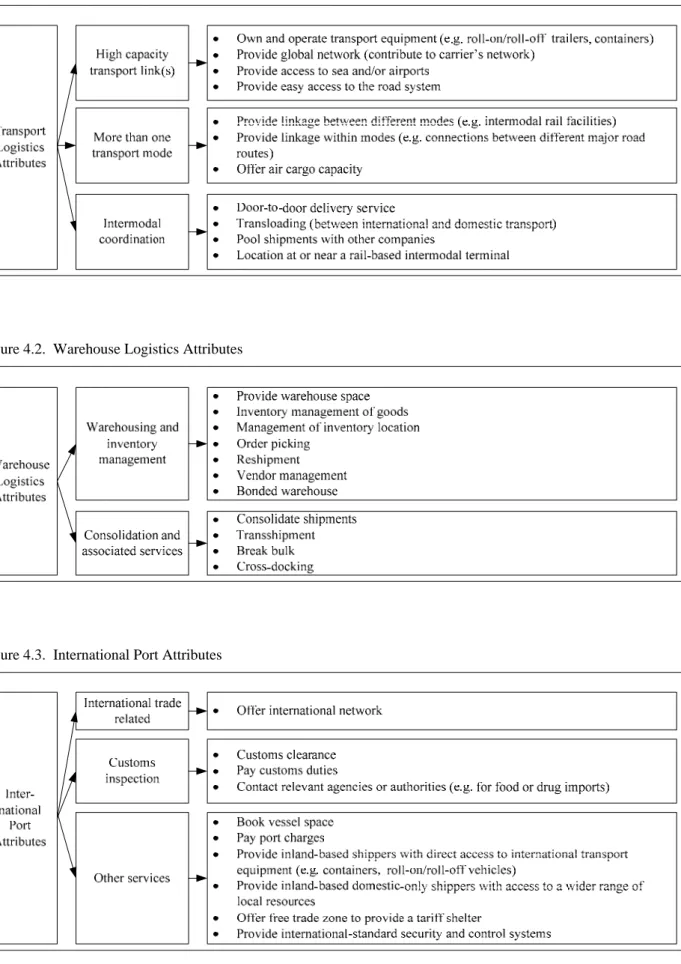
Changing functions
An example of this happened within the European Union (EU) with the establishment of the Single European Market (SEM) in January 1993. The GmbH was commissioned by the European Commission to investigate the concept of freight integrators (Zentrum für Logistik und Unternehmensplanung, 2003) .
Intermediate Conclusions: Towards a step-by-step action plan for “dry ports” – Part
They did not look specifically at logistics centres, although their study produced the following criticisms of terminals in Europe: lack of capacity; high cost of storage; lack of tri-modal (road, rail, water) terminals; terminals built for political decisions related to development policies rather than where necessary; terminals close on Sundays; taking down railway tracks for the "last mile". Summary of Chapter 4 – Towards a phased action plan for "dry port" development (Part 2).
Introduction
Clusters: an examination of definitions
In the OECD definitions, the concepts of network and cluster seem very similar, but with different emphasis. The definition of a cluster focuses more on a concentration of firms that offer an opportunity (i.e. "prone to rise") of activity, while a network is a planned collaboration to achieve something.
Economic and management theories associated with the concept of clusters
Porter’s concept of clusters
Porter's concept of a cluster includes both horizontal relationships (local competition and complementary services) and vertical relationships (suppliers and buyers). A further limitation of Porter's Diamond is that it does not explicitly include government, although it indirectly affects each of the four factors (corners) of the diamond.
Other theories on geographical concentration
For freight transport, especially international freight traffic, a limitation of Porter's Diamond is that the strictly local aspect of the cluster precludes the long-distance relationships that are common in transport and logistics. Ultimately, Porter's cluster concept is strongly associated with competitiveness – not only of firms, but also of industries and countries – which is seen by policymakers as essential to success in the global economy (Martin and Sunley, 2003).
Emergence of clusters
Critics of the concept of path dependence claim that it means nothing more than "history matters". Regional conditions are also likely to play a role in establishing the third form of logistics innovation, i.e.
Types of clusters
- Industry clusters
- Technology clusters
- Logistics clusters
- Port clusters
In these cases, all such institution types are part of the cluster management (the integrated port management system in the terms of Bichou and Gray, 2004). For example, a front runner can insist on exclusive use of a terminal against the wishes of the port authority (or cluster manager).
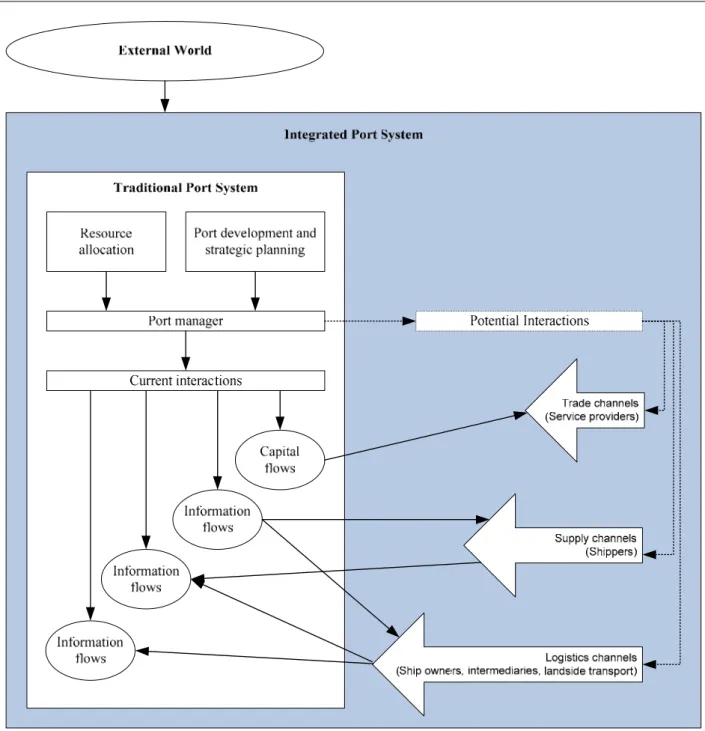
Government policy and clusters
Reasons for Government involvement
Whether they are located at the port or not, De Langen (2003) identifies at least six types of intermediaries typically associated with a port cluster. Using the terminology introduced earlier, they operate at the meso level (OECD, 1999) or in the trade channel (Bichou and Gray, 2004).
Problems of policy making for clusters
1) "The creation of clusters should not be government-driven, but should rather be the result of market-induced and market-led initiatives. Public intervention in the marketplace can only be justified in the presence of a clear market or systemic failure."
The changing role of Government
In short, the OECD suggests that groups should exit the market and that government should limit its role to that of an enabler or facilitator. Creating a context that encourages innovation and improvement by setting a challenging economic vision for the nation or region;.
Intermediate Conclusions: Towards a step-by-step action plan for “dry ports” – Part
To create favorable framework conditions for smoothly and dynamically functioning markets (infrastructure, competition policy and legislative reform, provision of strategic information). Summary of Chapter 5 – Towards a step-by-step action plan for "dry port" development (Part 3).
Introduction
Model Part 1: Factors governing decision of enterprises to locate
- Organization and structure
- Services offered
- Responsibility for assets and associated services
- Responsibility for financing terminal development
Part of the progress in China has included significant investment in the planned development of a nationwide network of distribution centers by the Chinese government. Shanghai has some of the most popular SEZs such as Waigaoqiao Free Trade Zone (FTZ) and Zhangjiang Hi-tech Industrial Development Zone (HIDZ).
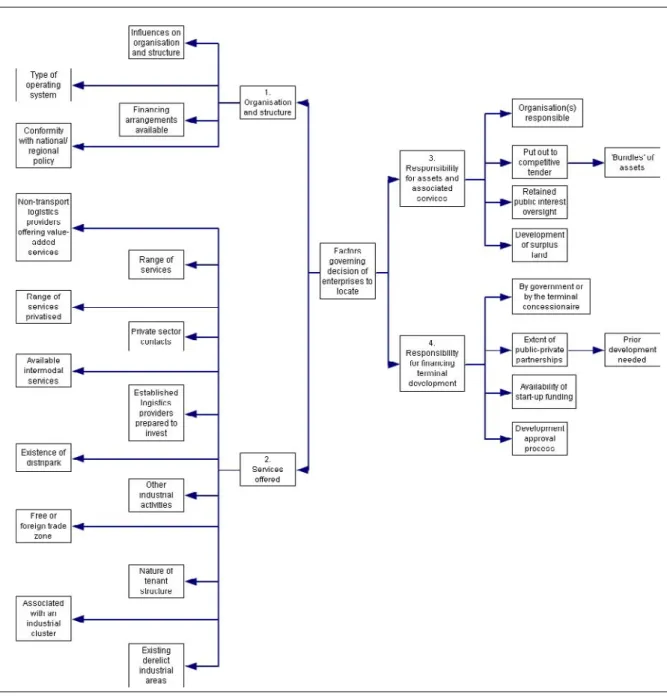
Introduction
Model Part 2: Replicating port concepts at inland locations
Identify local advantages/disadvantages
Landlocked countries
All areas specific to transport or logistics covered by the Almaty Conference appear to be included in the model developed in this study. These factors may need to be considered if the model is applied to the ESCAP region.
Solutions for landlocked countries
Identify interested parties
Identify potential functions
The results indicate that international experience is not yet the important factor it should be if the more remote regions want to develop rapid high-capacity links with the international markets. Nevertheless, Table 2 below shows that a wide range of logistics functions are undertaken at logistics centers in the more developed and coastal parts of the ESCAP region.
Establish operational quality and performance indicators
As a free port, all functions are permitted, including manufacturing, storage, processing, assembly, classifications, display, sampling and transshipment. A further analysis can be made of the "non-transport related costs" as has been done in ESCAP (2003a) (see Figure 7.3).
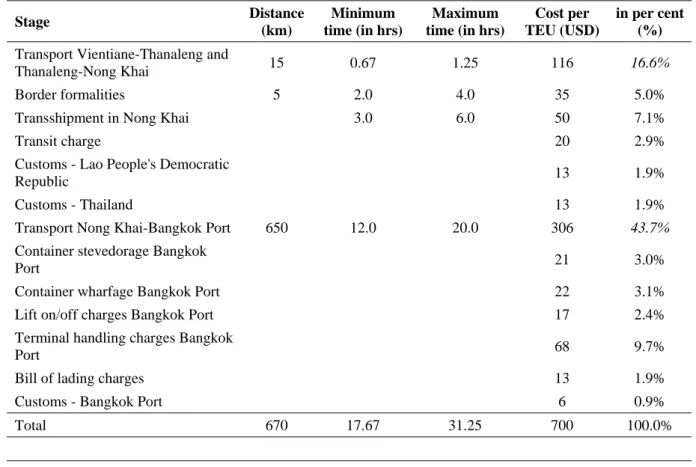
Identify potential operational problems
- Organizational problems
- Management and operational problems
- Communications problems/inefficiencies
- Infrastructural problems
- Establish framework of assessment
For most countries in the ESCAP region, existing information systems were developed individually for each sector, resulting in a lack of balance, coordination and standardization between different systems and transport modes. Competition for the financing of resources in the future will require better utilization of existing facilities, as well as the introduction of new capacity.

Introduction
Model Part 3: Replicating port concepts at inland locations
Define cluster boundary
Yantian Logistics Park will be an international cargo center specializing in international container transit services, warehousing, loading and unloading, processing and logistics information services. Qianhai Bay Logistics Park will be an integrated logistics center where priority is given to port development.
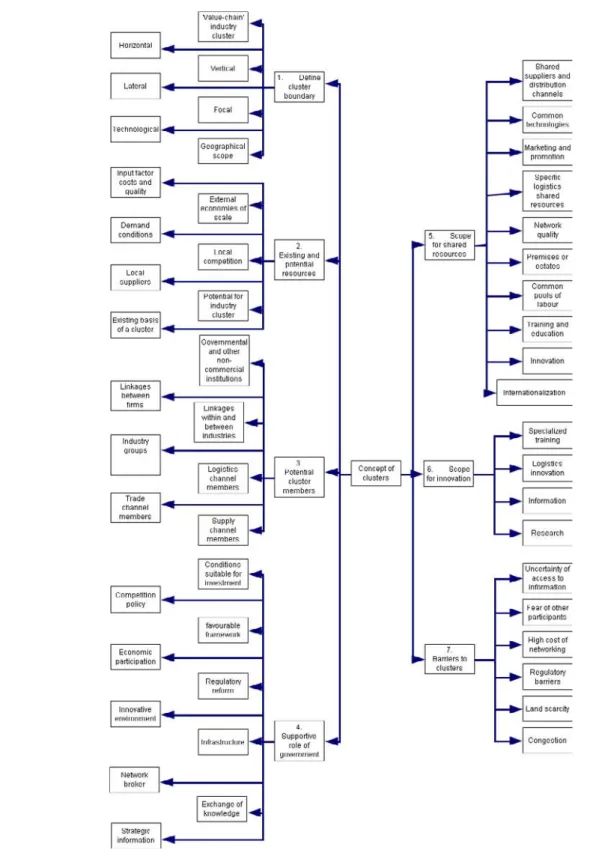
Existing and potential resources
Potential cluster members
Supportive role of Government
The development of the modern logistics industry has been put on the agenda of the central government and the governments of various Pan-PRD provinces. Guangxi has mapped out a five-year development plan for the development of its logistics sector.
Scope for shared resources
National associations established in most ESCAP member states play an important role in the self-regulation of the sector' (ESCAP 2006a, p. 69). An example of international cooperation is the international agreement related to the Greater Mekong River System shown in the extract below.
Scope for innovation
Thailand's private sector has also built some terminals along the Upper Mekong River in Chiang Rai Province. Countries at the center of the emerging system of transport-related agreements have enjoyed particular benefits, partly because of their geographical location and partly because of their active “transport diplomacy”. The proliferation of bilateral and subregional agreements in the transport sector raises concerns about their compliance with regional and global conventions.
Barriers to clusters
The dimensions and variables of the model are repeated in detail in the extract below as they are directly related to the development of inland logistics ports. Thirdly, it was expected that the state of development of the transport and logistics sector in the interior of the country would be very important for the development of LLCs.
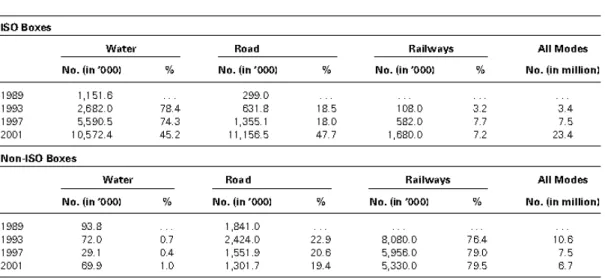
Initiatives for wider regional cooperation (ALTID, AH, TAR)
A Logistics and Supply Chain Management Approach to Measuring Port Performance, Maritime Policy & Management, Vol. 2005). Supply chain management: more than a new name for logistics, International Journal of Logistics Management, Vol.
